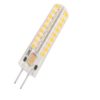I used a plug in power meter in the 240v side of the SMPS/transformer. I measured using MR5.3 LEDs and halogen on both a transformer and SMPS. With halogen the correct power figure was shown using both supplies. With LED the power approx doubled using. SMPS.
Now that is interesting, I have a plug in power meter, but don't have any electronic transformers to test, calling them electronic transformers as really only guessing they contain a SMPS or PWM and even then there is no need for a SMPS to work in the MHz range or to actually have a transformer inside.
This to my mind is a major problem, we are simply guessing what is likely inside them, the only information given with most is 30 - 105 VA 11.9 volt not seen any with 10 MHz marked on them, some it does give the output frequency on the data sheet, but we normally don't have the data sheet to hand.
I know my multi-meter has a frequency range, but although I can set a generator to 50 Hz, not sure what it would do with an output in MHz range, not even sure how it would work in the KHz range.
And in the main we are not looking at electricians swapping to LED, we are looking at the DIY guy who is unlikely to own a meter to measure frequency. Even with DC supplies we have no idea how smooth, I don't have an oscilloscope so no idea what output really looking at, we see with inverters the simulated sine wave, and with DC the RMS valve may be 12 volt, but what peak voltage is unknown. The old battery charger was rated 12 volt however peak is likely over 17 volt.
So nitty gritty is how does one advise a DIY guy who wants to change a quartz lamps to a LED lamp? I really don't know. Clearly a lamp marked 50/60 Hz will run fine with a toroidal transformer, and it will not work if the electronic transformer (I do hate that name) says 30 - 105 VA and the LED is less than 30 watt.
From what Winston1 tells us even if the electronic transformer is rated 0 - 105 VA it should still not be used. The power supply marked DC is also a problem, as no idea how smooth the DC is. If the supply is 36 volt to the regulator and the regulator has a mark/space ration or 1:3 then the average output is 12 volt, fed to a LED with a resistor driver built in that's OK, fed to a LED with a PWM driver built in then it may go pop.
So what do we tell people?


